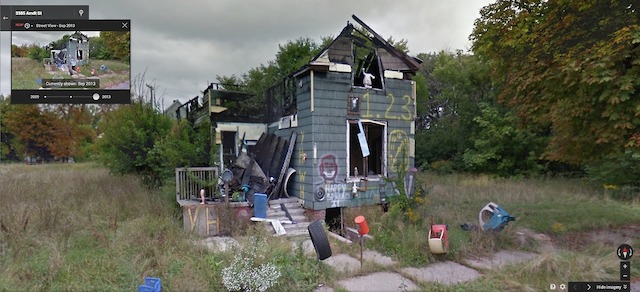Some lunchtime reading; used judiciously, it should last you until home time 
Happy invoicing!

- The Fermi Paradox - A good introduction to the various possible explanations of why we appear to be alone in the Universe: ”Where is everybody?… We’re left with three possible realities: We’re rare, we’re first, or we’re ****ed.”
- Shapeshifting - Of course, some would argue that we’re not alone. Here’s a handy guide to the shapeshifting reptilian aliens that have secretly replaced many important people, such as the Queen, Jennifer Aniston, and Sting: ”If you turn the album so you read "fields of gold" from it's proper angle you'll see that the date 1984-1994, now is upside down when "fields of gold" is placed as it should be. Upside down 1984-1994 becomes a number containing the digits 666 (the number of the beast) !”
- 8088 Domination Post-Mortem, Part 1, Conclusion - Some hardcore hacking for you here, displaying Full Motion Video (FMV) on an original 1981 IBM PC, which ran at 4.77MHz: ”I gave a talk in 2007 that explained 8088 Corruption in detail, and in that talk I explained that displaying FMV using CGA in graphics mode would be impossible. This is because CGA graphics mode uses 8x the amount of video memory that 8088 Corruption was handling. Even a simple calculation assuming 24fps video reveals that the amount of data needing to be updated per second (24fps * 16KB = 384KB/s) is outside of the IBM PC’s capability: CGA RAM can only be changed at a rate of 240KB/s, and most hard drives of the era operate at roughly 90KB/s. It sure felt impossible, so that’s why I said it… Then I thought about the problem for 7 years.”
- A Pyramid in the Middle of Nowhere Built to Track the End of the World - "The Stanley R. Mickelsen Safeguard Complex in Cavalier County, North Dakota, is the focus of an amazing set of images hosted by the U.S. Library of Congress… an abstract geometric shape beneath the sky without a human being in sight, or it could even be the opening scene of an apocalyptic science fiction film—but it's just the U.S. military going about its business, building vast and other-worldly architectural structures that the civilian world only rarely sees.”
- Brian the Mentally Ill Bonobo, and How He Healed - "Things were not looking good for Brian. He'd been kept from the affection of his mother—and all other women—and raised alone by his father, who sexually traumatized him. Normal social interactions were impossible for him. He couldn't eat in front of others and required a series of repeated, OCD-like rituals before he'd take food. He was scared of any new thing, and when he got stressed, he'd just curl up into the fetal position and scream." Cool story of the healing of a disturbed ape

- For The First Time, Chimpanzees Are Making A Fashion Statement -- Sticking Blades Of Grass In Their Ears - And in further ape news, one troop have developed the habit of wearing “ear accoutrements”: ”The cultural quirk first popped up in 2010 when a chimpanzee, named Julie, was spotted sporting a long-stemmed piece of grass. Julie acted as a role model for the other 11 chimpanzees in her group.”
- Visualizing Algorithms - "Algorithms are a fascinating use case for visualization. To visualize an algorithm, we don’t merely fit data to a chart; there is no primary dataset. Instead there are logical rules that describe behavior… algorithms are also a reminder that visualization is more than a tool for finding patterns in data. Visualization leverages the human visual system to augment human intellect: we can use it to better understand these important abstract processes, and perhaps other things, too." Great article by Mike Bostock, replete with inline demonstrations of various algorithms.
- How I got a medal from the Army for writing code - Vivin Paliath explains how he came to be awarded the (US) Army Commendation Medal: ”Part of what made the system so horrible was that there was no batch functionality of any kind. So let’s say you had to print out licenses for soldiers in your unit. You had to go through and print out each license one by one. You’d go to a screen to load up a user’s license by entering their license number, and then you had to print it. Our unit had around 150 soldiers, so to print everyone’s licenses, I had to individually look up each soldier and then print his license… I was too lazy for that, and worse, the whole thing was horribly inefficient. So I decided to figure out how to automate the process.”
- DSFP's First World War Dispatches - David S. F. Portree, historian and astrogeologist with NASA, is posting reports about World War I on their 100th anniversary. Spoiler: he’ll be finishing in November 2018.
- GooBing Detroit - Originally using Google Street View imagery from 2009 and Bing imagery from 2012, this image blog now uses the new Street View Time Machine imagery to show the decline of areas in Detroit, such as this house seen c.2009 and c.2013:


Happy invoicing!









Comment